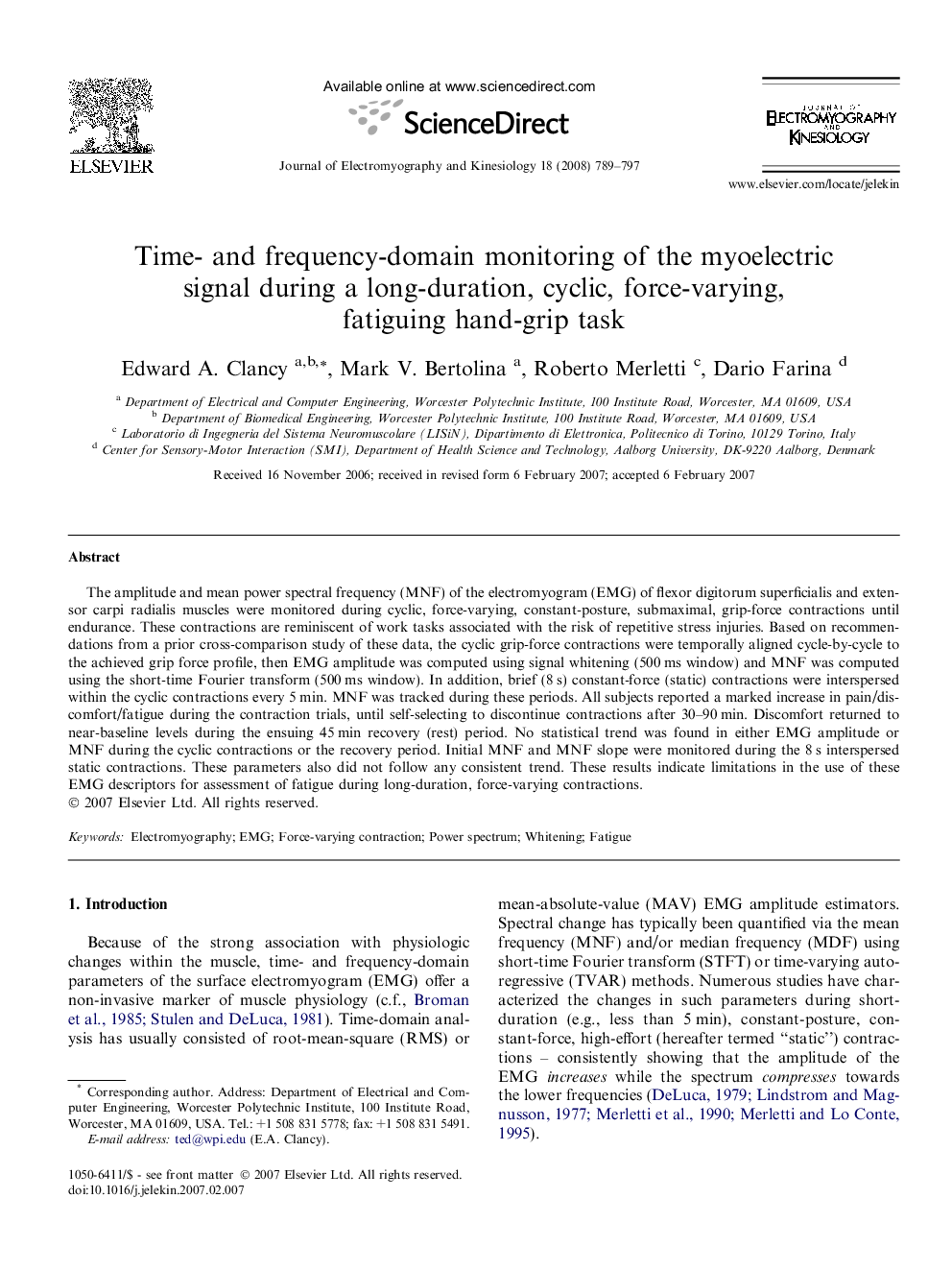| Article ID | Journal | Published Year | Pages | File Type |
|---|---|---|---|---|
| 4065534 | Journal of Electromyography and Kinesiology | 2008 | 9 Pages |
The amplitude and mean power spectral frequency (MNF) of the electromyogram (EMG) of flexor digitorum superficialis and extensor carpi radialis muscles were monitored during cyclic, force-varying, constant-posture, submaximal, grip-force contractions until endurance. These contractions are reminiscent of work tasks associated with the risk of repetitive stress injuries. Based on recommendations from a prior cross-comparison study of these data, the cyclic grip-force contractions were temporally aligned cycle-by-cycle to the achieved grip force profile, then EMG amplitude was computed using signal whitening (500 ms window) and MNF was computed using the short-time Fourier transform (500 ms window). In addition, brief (8 s) constant-force (static) contractions were interspersed within the cyclic contractions every 5 min. MNF was tracked during these periods. All subjects reported a marked increase in pain/discomfort/fatigue during the contraction trials, until self-selecting to discontinue contractions after 30–90 min. Discomfort returned to near-baseline levels during the ensuing 45 min recovery (rest) period. No statistical trend was found in either EMG amplitude or MNF during the cyclic contractions or the recovery period. Initial MNF and MNF slope were monitored during the 8 s interspersed static contractions. These parameters also did not follow any consistent trend. These results indicate limitations in the use of these EMG descriptors for assessment of fatigue during long-duration, force-varying contractions.
